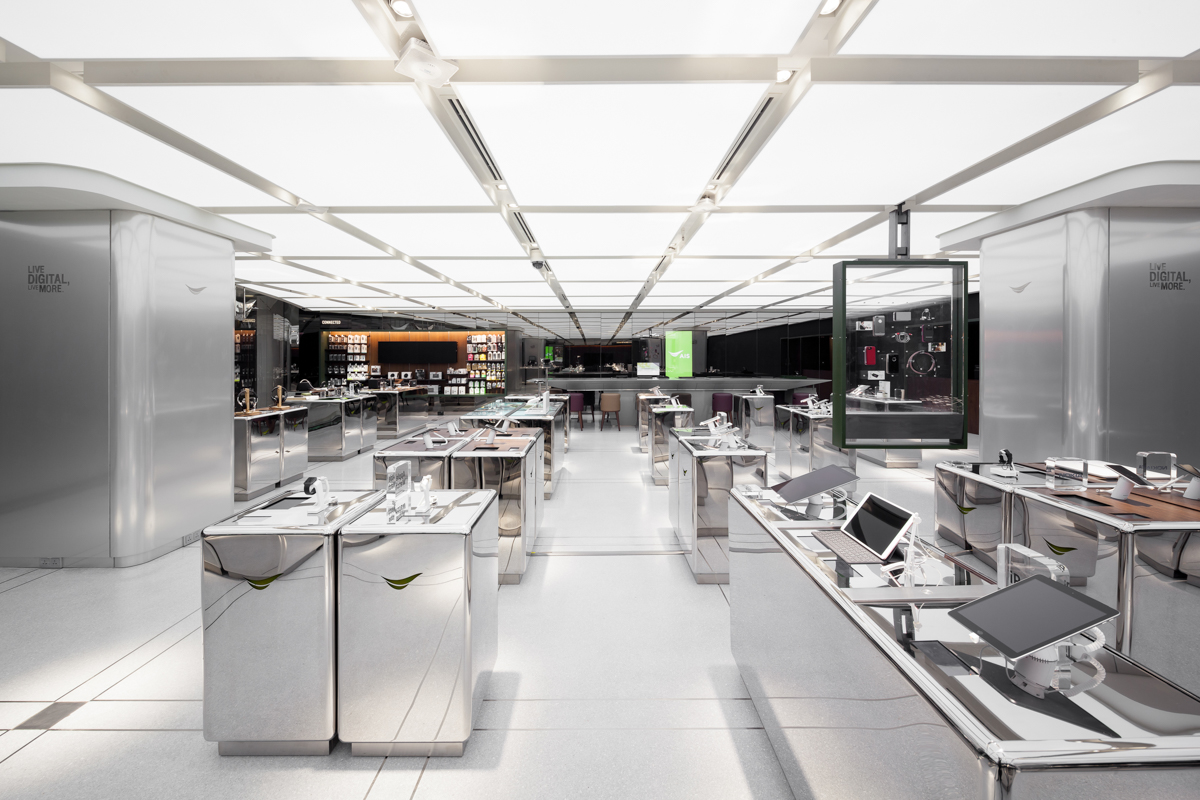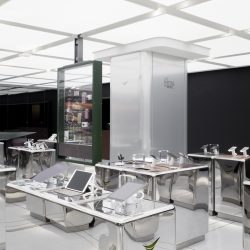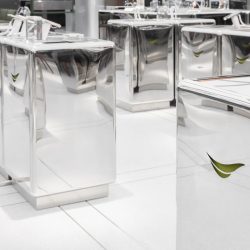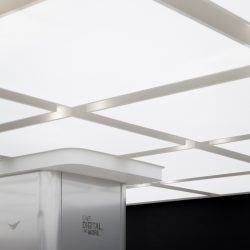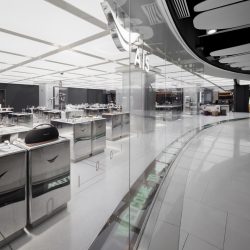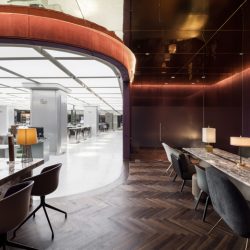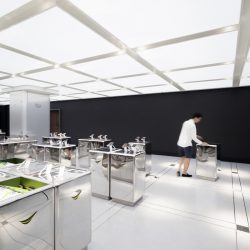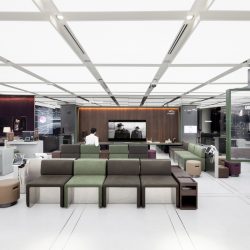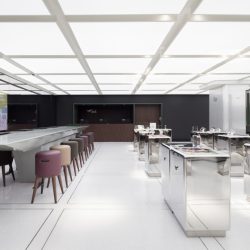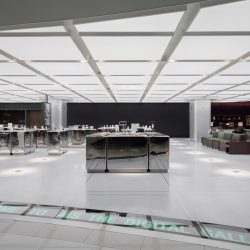IF (Integrated Field)
Before iPhone X showcased its new innovation that allows users to unlock the screen using its face-scanning feature, we had all been aware of the fact that the world we’re living in is turning faster than ever and never going to be the same again. With the changing communication technologies influencing people’s ways of life, especially in the business world that has gone through significant adaptation, we are witnessing things we never thought we’d see such as the disintegration of corporations that were too large to adapt themselves to the new rules of the game emerging overnight. We who are living in this same connected world have seen the reoccurrences of these phenomena so often that we have become somewhat indifferent.
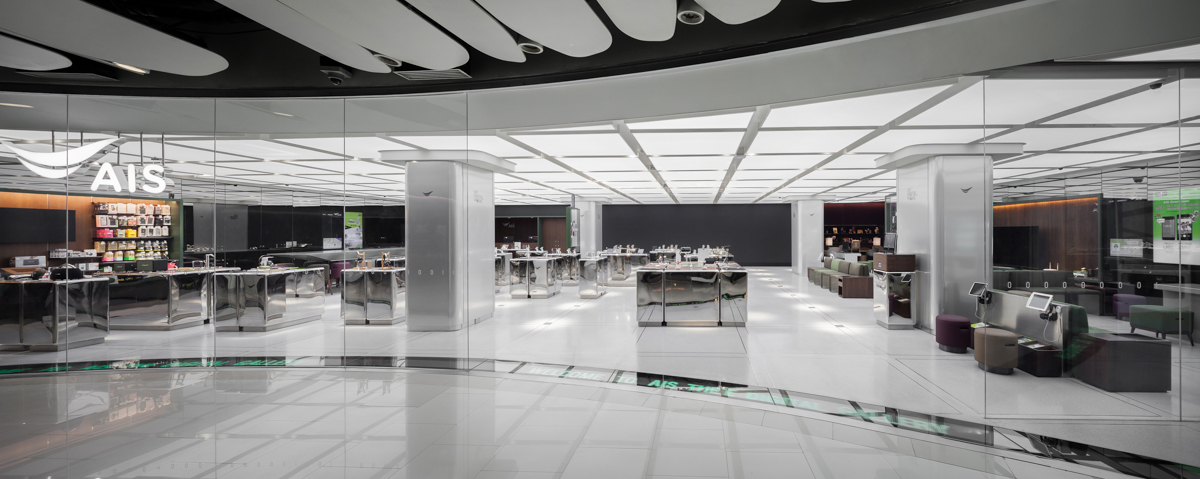
With these changing platforms, in terms of both behaviors and business, design is forced to evolve, especially in the realm of technological activities. Imagine, how can one design a service center for a mobile network operator provider in a time when people are able to pay, change promotions or switch to a new service provider, among other things, online? Why would one make the effort to come to an actual service center?
AIS Digital Gallery is AIS’s latest flagship store located in Central World Department Store. IF (Integrated Field), the project’s designer, answers the aforementioned questions by turning the store into a place where customers are given other dimensions of user experiences that may not be available online such as the opportunity to personally get their hands on the latest gadgets or participate in activities AIS offers its clients. The furniture in the waiting area has been adjusted to take up less space while the communal space has been designed to be more spacious and accommodate activities such as product launching events. The product display island called AIU was designed as units, granting greater flexibility of rearrangement. Each unit contains a built-in electrical and computer system, providing connectivity with the displayed products and turning the hi-tech gadgets into works of art via AIS’s very own Digital Gallery.
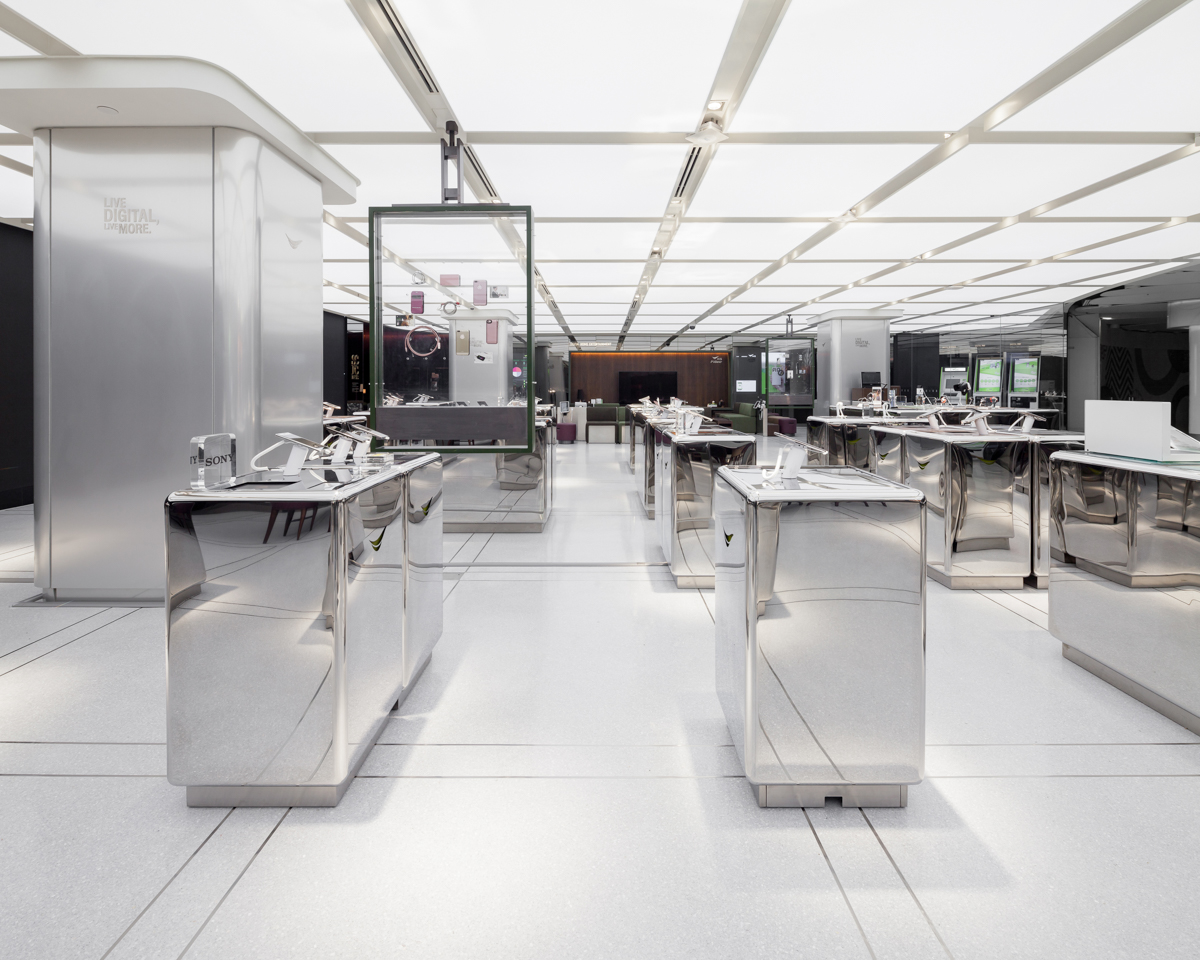
IF references Fountain (1971), Marcel Duchamp’s renowned art piece whose shape and form of a urinal ask the important question, ‘What is art?’. A century has passed since Duchamp’s controversial work, and IF invites us all to interpret the high-speed lifestyles of modern-day people through the gadgets displayed in this digital gallery and whether or not they can be perceived as art objects. It is perhaps during this moment that we are able to relieve ourselves from the exhausting influx of the massive volume of information that has made its way through the screen of our gadgets and finally have enough time to take a sip of tea as we ponder these world-class artworks of which we are all a part of their conception.
TEXT: PITI AMRARANGA
PHOTO : KETSIREE WONGWAN
ais.co.th

